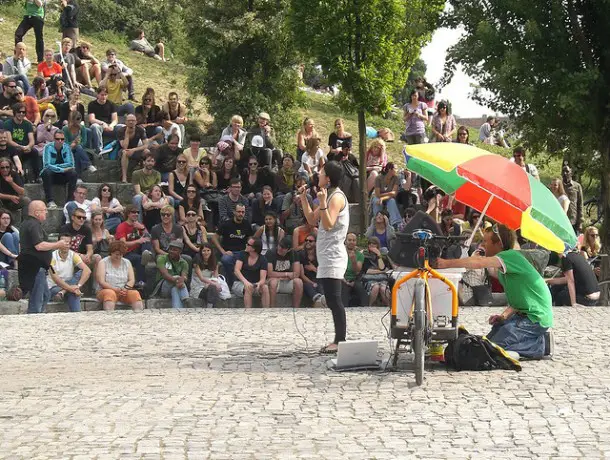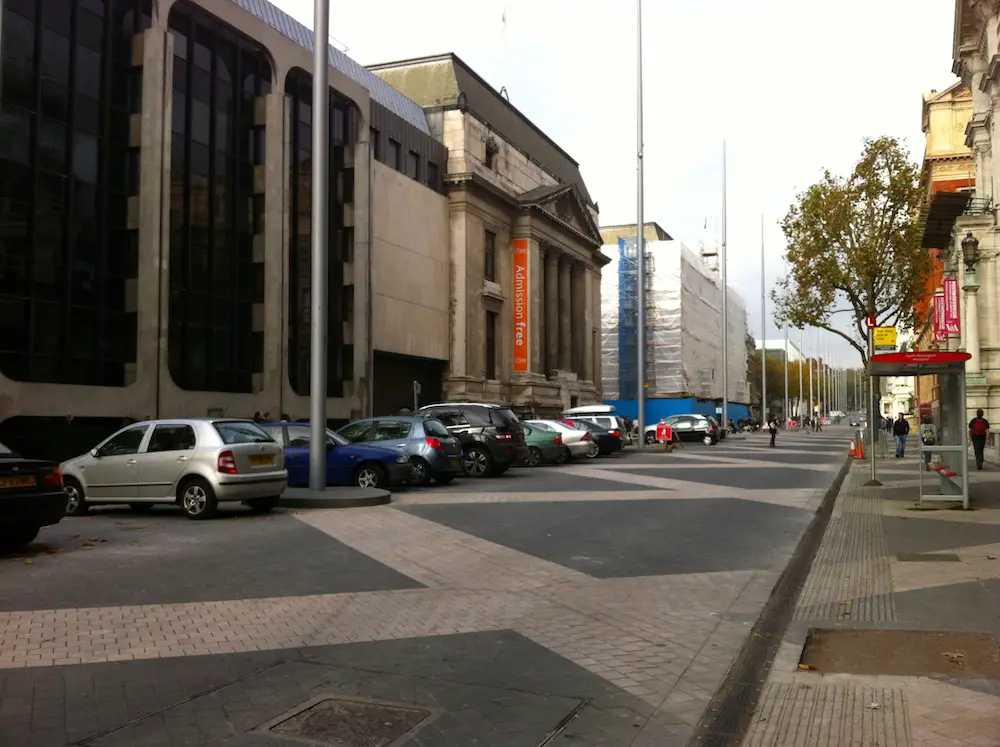It isn’t supposed to be this dreary in California. I’m cold. And the abandoned sidewalks tell me that most Californians just stay inside when it’s this cold. They’d rather ignore exactly what’s happening outside and not have to explain that, yes, sometimes it’s less than an ideal climate in paradise.
Which is why I’m confused as to why I’m in (at?) one of the region’s many outdoor malls. I’m not sure if these centers are a common sight but they don’t take a whole lot of explanation: take the ceilings, fluorescent lighting and overwhelming feeling of labyrinthine entrapment out of a typical mall and the picture sharpens itself a little. Actually, that explanation probably wasn’t even needed. It’s a mall, but it’s outside.
I’m at The Block at Orange (I’m not going into the layered semantics behind the label, suffice to say there are marketing teams paid millions of dollars in contracts to come up with those sorts of things), an archetypal midsize outdoor mall. The buildings are all multi-story in scale but not in practice, the price points for most of the stores are steadily in the middle income bracket and even the cannily placed upscale brands are of the “outlet store” variety. The architecture could be classified as something like Suburban Dynamic without much irony, as in there’s a lot of glass, thinly welded steel, aluminum and some aesthetic flourishes involving indoor/outdoor restaurants.
The architecture is less important than the overall design, though, since malls (even outdoor ones) are typically designed with a lot of TBDs in their schematics. Usually (and for uninteresting reasons) they (the malls) are moored by a department store or large shopping experience, and if the mall is tiered by income brackets (as most large malls are) there will be a high end buoy on one side of the mall flanked by shops with similar price points and a working class incarnation on the other side, etc. These are typically called Anchor Stores (hence the nautical language) and they also typically don’t pay rent. Pretty much every mall follows this formula.
So, physically at least, outdoor and indoor malls don’t really adhere to different formulas, which is why there aren’t separate developer markets for indoor/outdoor opportunities – if you planned the Springfield Mall you can probably design the Springfield Promenade. Which is why it’s so strange to stand in the middle of an IM (which I’ll be calling indoor malls from this point onwards) and compare it to standing “inside” an OM (which I’ll be calling… ok, you probably get it by now). They’re both there to get you to spend money, something we can confidently call the foundation for either construction, but what about after that? Do they really serve the same psychological purpose?

I’ve been to a few OMs, and a couple of them are located in downtown areas (Santa Monica and Denver come to mind immediately). It didn’t strike me as strange until I looked around at The Block at Orange and understood that most OMs are meant to be ersatz downtowns for cities that were either never centralized to begin with or were decentralized through crawling expansion. They are downtowns for people who have never seen downtowns before.
It seems the popularity of these OMs in Southern California actually allows for sprawl to continue. OMs are loose hubs, inclusive but in that sort of claustrophobic way which, honestly, probably doesn’t bother a lot of people. But then, OMs aren’t really problems themselves, are they? The places we live aren’t conducive to static downtowns, so we build new ones under the express guidelines that the solution to growth is more growth, that linearity is the American Way. We don’t need to incubate culture; we simply grow it out of the ground.
The volume of text on the disintegration of the American downtown should give you an idea of how much academic and journalistic thought goes into this subject, so I’ll spare you any of my distinctly un-academic/journalistic thoughts. From a strictly urban point of view these OMs are troubling because they pack metropolitan problems into smaller boxes than are practical. Instead of looking at recovering economies, public spaces, environmental issues, etc. as intermeshed issues that play off each other, OMs treat them as monolithic issues that can be solved with a sledgehammer.
People vote with their feet and wallets, though, and on any given weekend OMs are packed with shoppers, movie goers and awkwardly amorous teenagers wading through the waters of marginal independence. These are not unpopular places, and they’re not setup to imitate American downtowns either functionally or aesthetically. These are main streets for a second-generation brand of suburbia that has dominated the planning vernacular for the past 30 years. But with energy prices reaching historical zeniths and the clustering of what Richard Florida calls the “creative class” in cities, the defining language of commercial construction will eventually change and, hopefully, artifacts like The Block at Orange will become silly detours.
Photo: frankfarm


